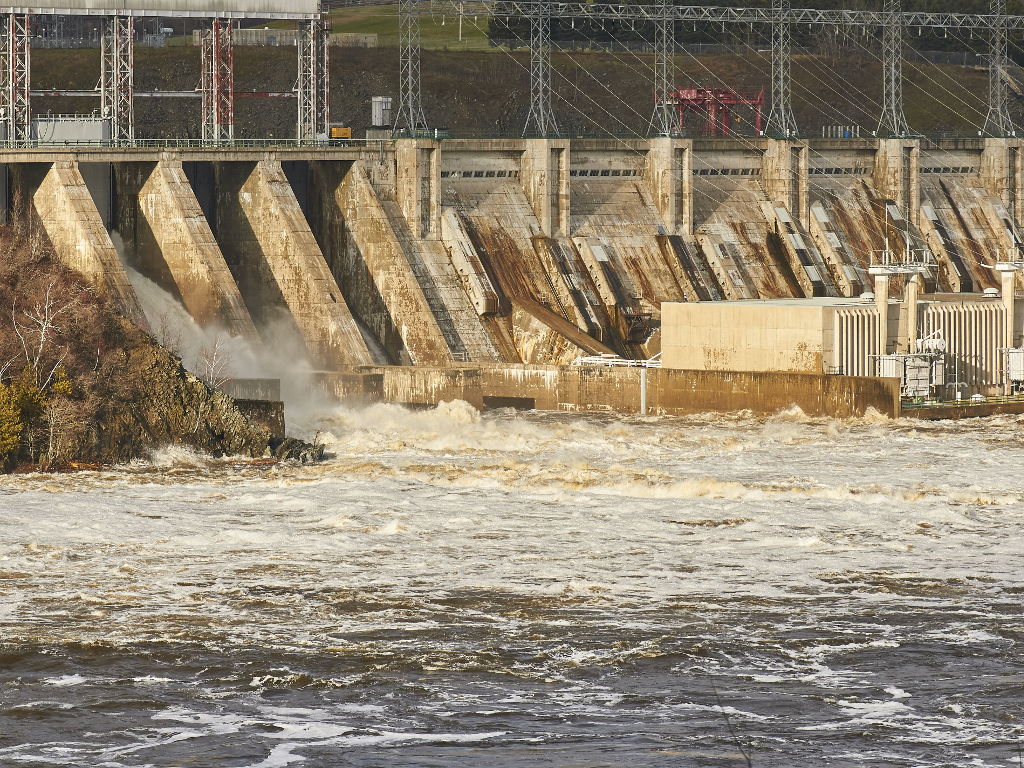Construction of 8,700 hydro power plants planned in Europe ŌĆō More than 3,000 could be located in the Balkans
Source: Beta
 Friday, 29.11.2019.
Friday, 29.11.2019.
 11:04
11:04
 Friday, 29.11.2019.
Friday, 29.11.2019.
 11:04
11:04
Illustration (Photo: Echunder/shutterstock.com)

As warned by NGOs EuroNatur and Riverwatch, the new projects will destroy the previously intact rivers, especially in the Balkans.
Furthermore, around 2,500 HPP projects are planned in protected areas, mostly national parks or those within the EU network Natura 2000.
The report lists 946 HPPs in Serbia ŌĆō 85 existing ones, 830 planned and 31 under construction, a total of 105 in Kosovo, 692 in Albania and 426 in Bosnia and Herzegovina.
In Europe, the majority of them are or will be located in Germany ŌĆō 4,839, followed by Austria (4,485), France (2,663) and Norway (2,453).
The study commissioned by EuroNatur, Riverwatch, the World Wildlife Fund (WWF) and the Group for the Study of Territory and Environment GEOTA emphasizes the failure of governments in and outside the EU to protect rivers and biodiversity and documents the lack of compliance with the EU laws, especially the Water Framework Directive.
ŌĆō We are facing the end of free-flowing rivers in Europe and a collapse of biodiversity if we do not stop this hydropower madness. The EU Commission under Ursula von der Leyen and the national governments have to stop this expansion. Above all, they must put an end to subsidies for hydropower and improve river protection. It is unacceptable that our electricity bill finances hydropower investors and thus the destruction of EuropeŌĆÖs lifelines ŌĆō says Ulrich Eichelmann of Riverwatch.
EuroNatur CEO Gabriel Schwaderer says that the largest number of hydropower plants ŌĆō more than 3,000 ŌĆō is planned to be constructed in the Balkans. He says that most of these rivers are still intact, some even untouched.
ŌĆō We urge the European Union to address these developments in the accession negotiations and to insist on compliance with nature conservation legislation. In the Balkans, there is excessive investment in hydropower, while the potential for solar power ŌĆō a truly renewable energy source ŌĆō remains largely untapped ŌĆō says Schwaderer.
Hydropower dams destroy rivers and their surroundings, and they substantially contribute to biodiversity loss. They interrupt the natural flow of the river, block fish migration ŌĆō affecting fish stocks and the survival of endangered species ŌĆō and intercept sediments that protect river banks and deltas from flooding and rising sea levels. Local communities are literally being dried up. In addition, over 90 percent of the planned hydroelectric power plants generate only small amounts of electricity (less than 10 MW), i.e. they are so-called ŌĆśsmallŌĆÖ hydropower plants that cause great damage to nature with little economic benefit, EuroNatur and Riverwatch say in a joint press release.
In order to tackle freshwater biodiversity loss, they demand from all European countries and the EU a Blue New Deal for European Rivers, no more subsidies, better protection of valuable river stretches and a new pan-European river restoration program.
Tags:
EuroNatur
Riverwatch
World Wildlife Fund
WWF
Group for the Study of Territory and Environment
GEOTA
Ulrich Eichelmann
Gabriel Schwaderer
hydro power plants
construction of hydro power plants
HPPs
mini HPPs
Comments
Your comment
Most Important News
Full information is available only to commercial users-subscribers and it is necessary to log in.
Follow the news, tenders, grants, legal regulations and reports on our portal.
Registracija na eKapiji vam omogu─ćava pristup potpunim informacijama i dnevnom biltenu
Na┼Ī dnevni ekonomski bilten ─će stizati na va┼Īu mejl adresu krajem svakog radnog dana. Bilteni su personalizovani prema interesovanjima svakog korisnika zasebno,
uz konsultacije sa na┼Īim ekspertima.


 Izdanje Srbija
Izdanje Srbija Serbische Ausgabe
Serbische Ausgabe Izdanje BiH
Izdanje BiH Izdanje Crna Gora
Izdanje Crna Gora


 News
News






